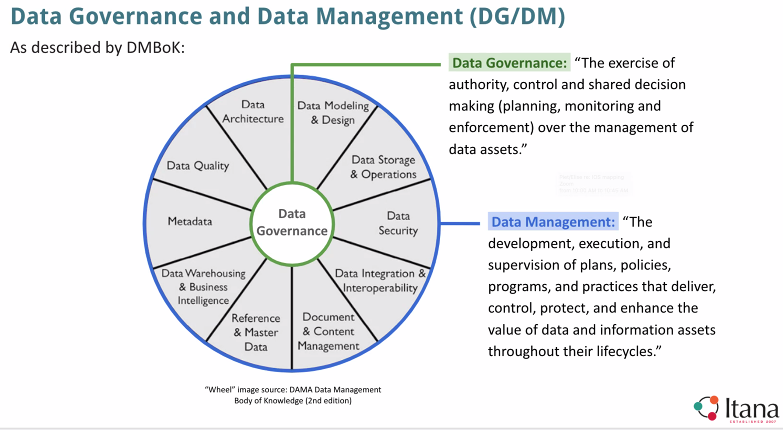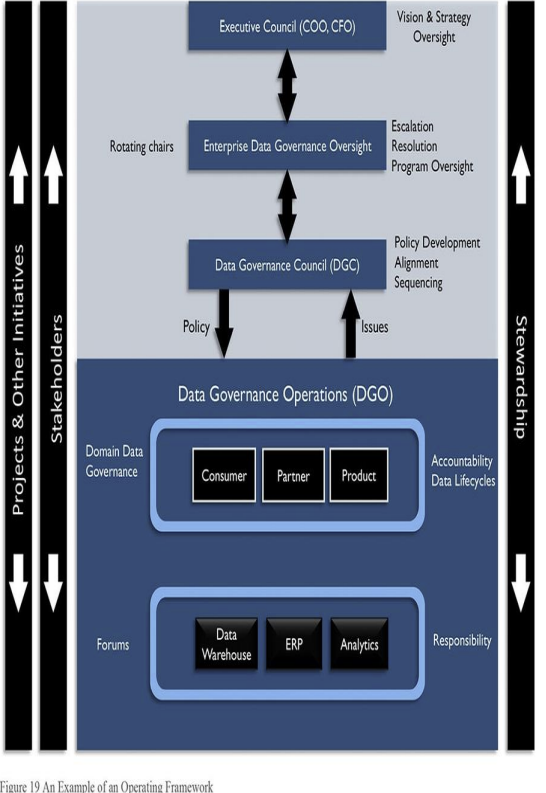

Goals and Principles of Data Governance
Data Governance (DG) defines the
principles,
policies,
processes,
frameworks,
metrics, and
oversight mechanisms that are essential for managing data as a strategic asset.
DG ensures that data is accurate, consistent, secure, and accessible, guiding how it is collected, stored, processed, and used at every level of an organization. It establishes clear roles and responsibilities for data management, sets standards for data quality, and provides a structured approach to compliance and risk management. Through DG, organizations can unlock the full potential of their data, improve decision-making, foster transparency, and maintain data integrity throughout its lifecycle. As clearly seen in the pic above DG is centered on everything data.


